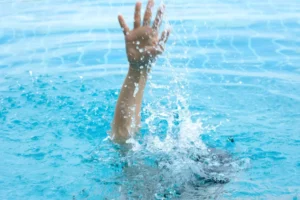Swimming Pool Accidents in Texas~2 min read

With COVID-19 stay-at-home recommendations, more people are building swimming pools and more people are staying at home swimming in them. They may have a few people at a time over to share the outdoor swimming experience.
Along with increased pool usage comes increased incidents of drowning or near-drowning cases. Unfortunately for Texas, it ranks first in the list of states for pool drowning deaths. It is important for everyone, especially adults, to know what drowning looks like, and what the aftermath may be for those who survive a near drowning experience.
What Drowning Looks Like
Drowning is the second leading cause of accidental death in children and the fifth cause for adults. Most all drownings are due to negligence of some type, either with pool equipment or chemicals, or with those charged with observing swimmers.
Observers should all be educated about what drowning looks like. Drowning victims do not flail their arms and scream. They are busy trying to push themselves up out of the water to get a breath. If they reach the surface, they cannot shout for help. All they can do is fight for air.
Signs of drowning, also known as the “Instinctive Drowning Process, include:
- The person is vertical and bobbing up and down in the water.
- Their body looks like they are climbing a ladder.
- Eyes are glossed over and not focusing.
- They appear to be trying to swim but making no progress.
- When their head does get above the water, they gasp for breath.
- Their head is tilted back as they reach the top of the water and try to catch a breath.
- They look like they are trying to roll onto their back.
The outcome of the experience is either drowning, a near-drowning experience with injuries, or a near-drowning experience with no injury.
Near-Drowning Experience with Injuries
The joy of having your loved one revived after a near-drowning experience can be tempered by the damage that occurred. There is a range of possibilities. How severe the damage is depends on how long the person was under water and deprived of oxygen. Some complications may include:
- Acute respiratory distress syndrome.
- Brain damage.
- Chemical and fluid imbalances in the body.
- Permanent vegetative state.
- Pneumonia.
All those who suffered a near-drowning experience need to seek medical attention. A person may experience drowning symptoms hours or days after the experience.
If you or your child suffered damages due to a near-drowning experience, or someone in your family drowned due to another’s negligence, the personal injury attorneys at Springer & Lyle may be able to help you obtain reasonable compensation for your injuries, lost wages, medical expenses, pain and suffering, and other physical damage. Contact us at 940-387-0404 for a free consultation.






